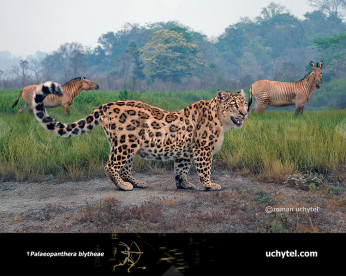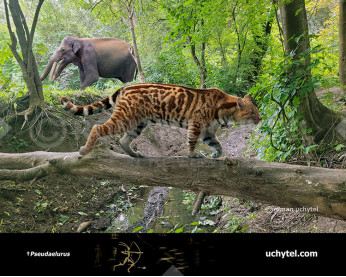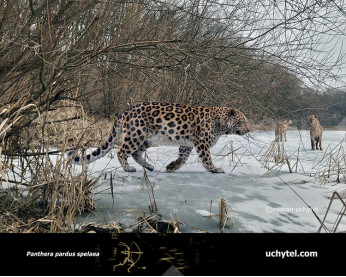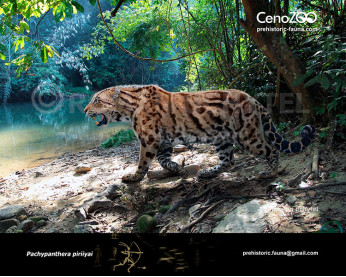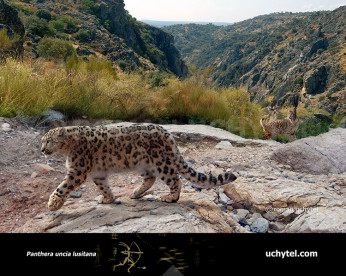Panthera palaeosinensis
4040Panthera palaeosinensis (Panthera palaeosinensis Zdansky 1924)
Order: Carnivora
Family: Felidae
Temporal range: during early Pleistocene (China)
Dimensions: length - 1,7 m, height - 70 сm, weight - 70 kg
Panthera palaeosinensis was an early Pleistocene species from northern China. It is often incorrectly referenced as the ancestral tiger, Panthera tigris although it shares features with all living large cats. Recent thought places it close to the ancestry of the genus Panthera.
It was first described in 1924 as Felis paneosinensis by Otto Zdansky in his work "Jungtertiäre Carnivoren Chinas". Its exact date is not secured, though most likely two to three million years old. Panthera paleosinensis's skull has an A-P length of 262 millimetres and a mandibular length of 169 millimetres and the living creature would have appeared like a jaguar, stout and strong. The conical upper canines were not present in the fossil, but the lower canines bear the vertical grooves typical of Panthera.
From Wikipedia, the free encyclopedia
Panthera palaeosinensis (Panthera palaeosinensis Zdansky 1924)
Order: Carnivora
Family: Felidae
Temporal range: during early Pleistocene (China)
Dimensions: length - 1,7 m, height - 70 сm, weight - 70 kg
Panthera palaeosinensis was an early Pleistocene species from northern China. It is often incorrectly referenced as the ancestral tiger, Panthera tigris although it shares features with all living large cats. Recent thought places it close to the ancestry of the genus Panthera.
It was first described in 1924 as Felis paneosinensis by Otto Zdansky in his work "Jungtertiäre Carnivoren Chinas". Its exact date is not secured, though most likely two to three million years old. Panthera paleosinensis's skull has an A-P length of 262 millimetres and a mandibular length of 169 millimetres and the living creature would have appeared like a jaguar, stout and strong. The conical upper canines were not present in the fossil, but the lower canines bear the vertical grooves typical of Panthera.
From Wikipedia, the free encyclopedia

-797x638.jpg)
-797x638.jpg)
-70x56.jpg)
-70x56.jpg)
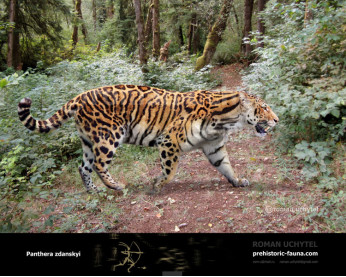
-346x277.jpg)
